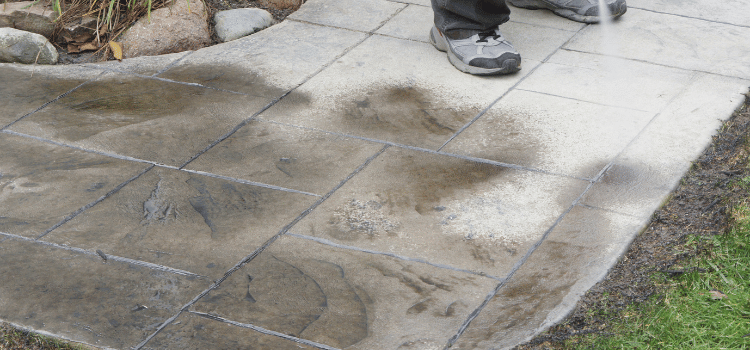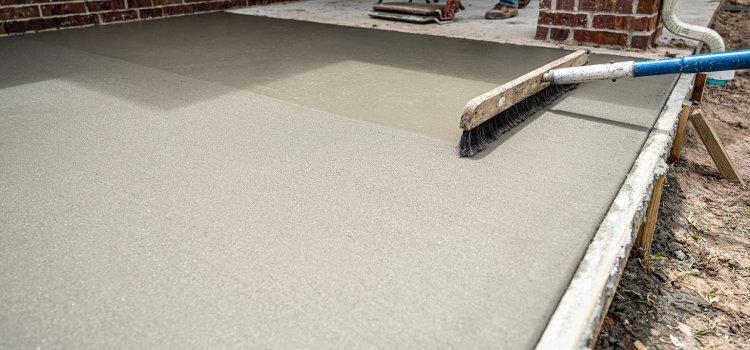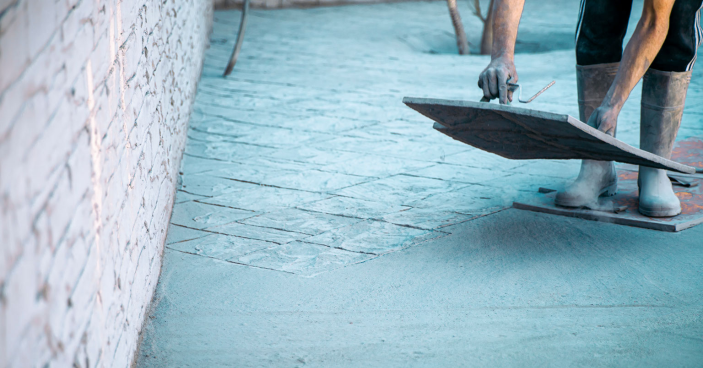Concrete surfaces can undergo a remarkable transformation with the application of paint and stain. These methods not only enhance the aesthetic appeal of your space but also provide crucial protection. Let’s delve into the key aspects of why and how to use concrete paint and stain effectively.
Why Consider Paint and Stain for Concrete?

Protection and Aesthetic Enhancement: Applying paint or stain serves a dual purpose of safeguarding your concrete surfaces and enhancing their visual appeal. The right finish can withstand wear and tear while adding a touch of elegance to your space.
Advantages of Paint:
- Uniform Coverage: Paint offers a uniform, opaque coverage, making it ideal for high-traffic areas where durability is crucial.
- Color Customization: With a wide range of colors available, paint allows you to customize your space according to your personal taste and style.
Advantages of Stain:
- Translucent Richness: Stain seeps into the concrete, providing a rich, translucent tone that accentuates the natural texture of the surface.
- Durability and Aesthetics: Beyond visual appeal, stain enhances the durability of floors or walls, resisting wear, repelling water, and making cleaning more manageable.
Environmental Responsibility: When making choices for concrete finishes, it’s essential to consider environmentally responsible options. Opt for products that not only look great but also align with sustainable practices.
Concrete Surface Preparation: Setting the Stage for Success
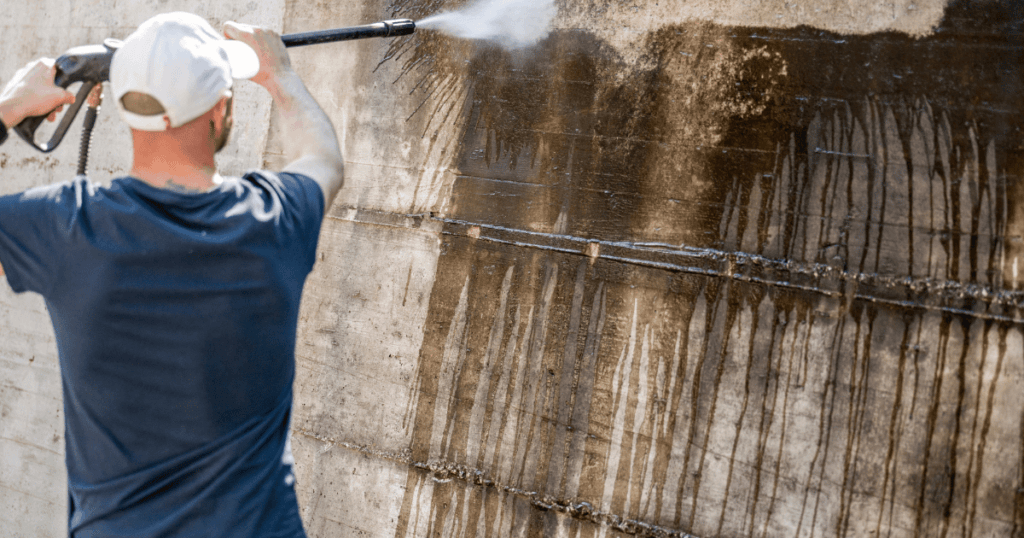
Proper surface preparation is a crucial step in ensuring a flawless and long-lasting finish. Before applying paint or stain, follow these steps:
Assess the Surface:
Before starting the transformation process, carefully assess your concrete surface. Look for cracks, oil stains, old paint, or any contaminants that may interfere with the finish. Address any issues found before proceeding to the next steps.
Clean and Repair:
Cleaning and repairing the concrete surface are essential for creating a clean slate. Use methods like pressure washing to remove dirt, grime, or tougher stains. For cracks or chips, consider using concrete crack filler. This step ensures optimal conditions for paint or stain adherence.
Gather Materials:
Ensure you have all the necessary materials and tools for the job. This includes a high-quality paint roller or sprayer for paint, brushes for stains, and personal protective gear. Double-check your list to ensure you have everything you need before starting.
Priming (if necessary):
While not always required, priming can be a game-changer for porous or patched surfaces. A primer helps ensure an even finish and enhances the longevity of the final result. Take the time to assess whether priming is necessary based on your specific situation.
Application Techniques for Concrete Paint and Stain

Proper application techniques are key to achieving a professional and attractive finish. Whether you’re using concrete paint or stain, follow these guidelines:
Applying Concrete Paint
- Smooth and Primed Surface: Start with a smooth and primed surface to ensure a uniform coat. Stir the paint thoroughly before application to achieve consistent results.
- Application Tips: Use a roller specifically designed for concrete surfaces. Work in sections, maintain a wet edge to avoid lap marks, and consider applying a second coat for a richer color.
Applying Concrete Stain
Adding Character to the Surface: Think of staining as a process of adding character to the concrete surface. Use a sprayer or brush for a consistent and even application, allowing the stain to penetrate for a full and vibrant effect.
Application Tips: Apply stain sparingly, as less is more. If the color isn’t deep enough, additional layers can be added for the desired effect.
Drying Times: Be aware of drying times. Paint may require at least 24 hours before it’s dry to the touch, while stains may dry quicker but necessitate a sealer with additional drying time.
Avoiding Mistakes: Follow the manufacturer’s guidelines to prevent common mistakes like rushing the process or applying too much product. Weather conditions can impact the application, so pay attention to environmental factors. If uncertain, professionals can ensure a job well done.
Maintaining Concrete Paint and Concrete Stain
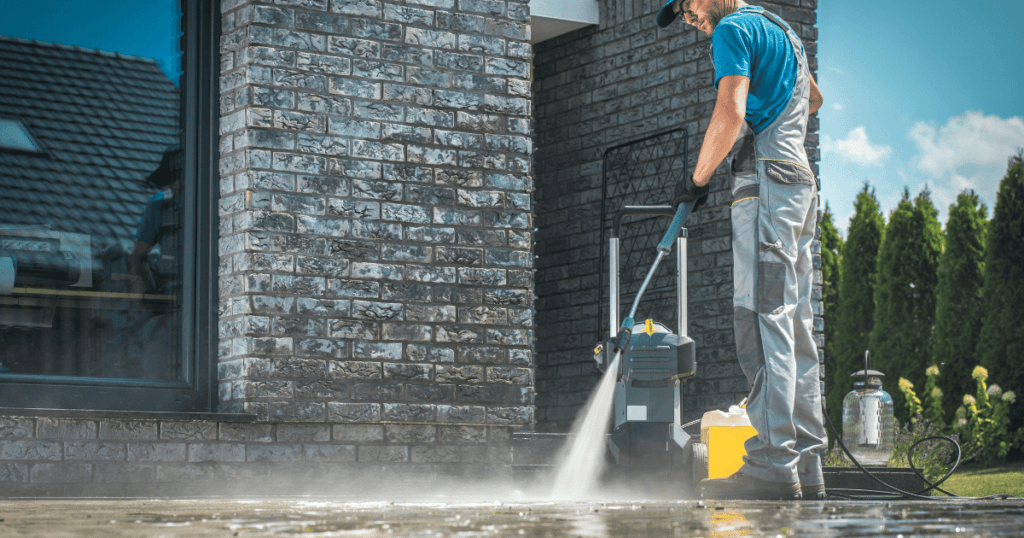
Once you’ve successfully transformed your concrete, maintaining the finish is essential for long-lasting beauty. Here are tips for caring for your painted or stained concrete surfaces:
Routine Cleaning:
- Regularly sweep away debris and promptly clean up spills to protect the finish.
- For deeper cleaning, use a mild detergent and a soft brush to avoid damaging the sealant or the paint itself.
Resealing (as needed):
- Reseal stained concrete every few years to maintain water resistance and prevent fading.
- Check for signs of wear on painted surfaces and touch up promptly to prevent further damage.
Refreshing the Finish of Concrete Paint:
- Recognize that no finish lasts forever, and occasional maintenance is normal.
- When substantial wear or color changes become noticeable, consider applying a fresh coat or completely redoing the surface.
Longevity and Vibrancy of Concrete Paint:
- Your efforts in maintenance contribute to the longevity and vibrancy of your space’s appearance.
- Choose a finish that resonates with you and aligns with your willingness to perform maintenance, ensuring many years of enjoyment with your beautifully transformed concrete surface.
Concrete Paint and Stain Summary
In conclusion, the journey of transforming concrete surfaces with paint and stain is a harmonious blend of aesthetics and functionality.
Beyond the visual allure, these finishes provide crucial protection, durability, and customization options. Successful application requires meticulous surface preparation and adherence to application techniques, ensuring a flawless and enduring result.
Maintenance, a key component, prolongs the vibrancy of the transformed surfaces.
Ultimately, this transformative process not only beautifies spaces but also adds a layer of resilience to concrete, promising years of enjoyment and admiration for your artfully enhanced environment.




